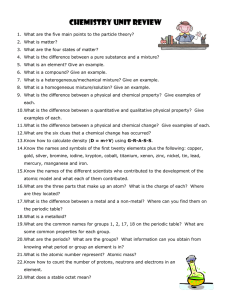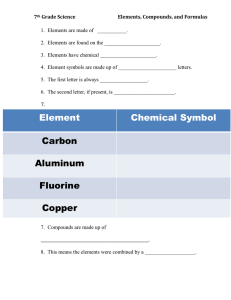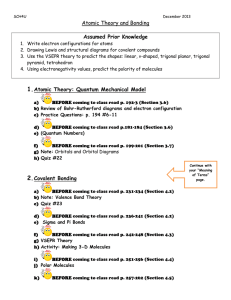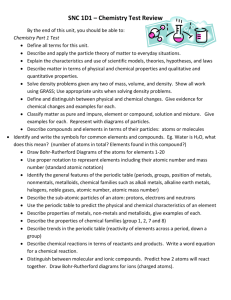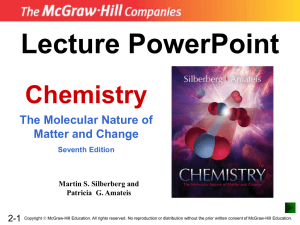Chemistry Unit Review
advertisement
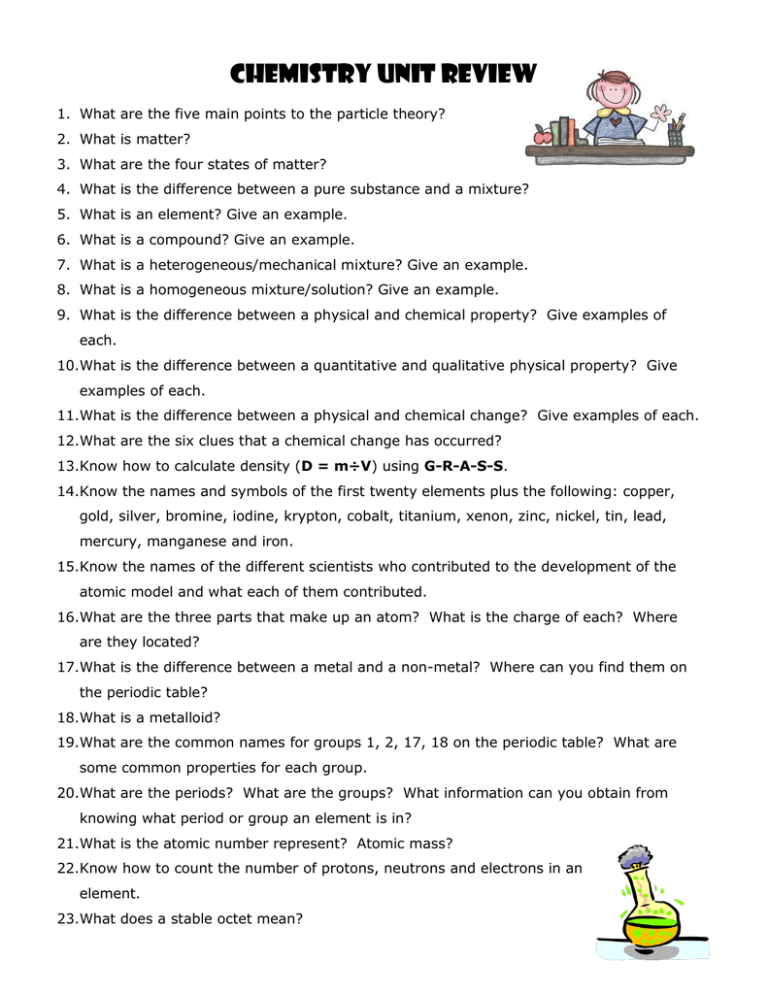
Chemistry Unit Review 1. What are the five main points to the particle theory? 2. What is matter? 3. What are the four states of matter? 4. What is the difference between a pure substance and a mixture? 5. What is an element? Give an example. 6. What is a compound? Give an example. 7. What is a heterogeneous/mechanical mixture? Give an example. 8. What is a homogeneous mixture/solution? Give an example. 9. What is the difference between a physical and chemical property? Give examples of each. 10.What is the difference between a quantitative and qualitative physical property? Give examples of each. 11.What is the difference between a physical and chemical change? Give examples of each. 12.What are the six clues that a chemical change has occurred? 13.Know how to calculate density (D = m÷V) using G-R-A-S-S. 14.Know the names and symbols of the first twenty elements plus the following: copper, gold, silver, bromine, iodine, krypton, cobalt, titanium, xenon, zinc, nickel, tin, lead, mercury, manganese and iron. 15.Know the names of the different scientists who contributed to the development of the atomic model and what each of them contributed. 16.What are the three parts that make up an atom? What is the charge of each? Where are they located? 17.What is the difference between a metal and a non-metal? Where can you find them on the periodic table? 18.What is a metalloid? 19.What are the common names for groups 1, 2, 17, 18 on the periodic table? What are some common properties for each group. 20.What are the periods? What are the groups? What information can you obtain from knowing what period or group an element is in? 21.What is the atomic number represent? Atomic mass? 22.Know how to count the number of protons, neutrons and electrons in an element. 23.What does a stable octet mean? 24.What are valence electrons? 25.Be able to draw neutral Bohr-Rutherford diagrams for the 1st 20 elements. 26.Be able to draw ion Bohr-Rutherford diagrams for the 1st 20 elements. 27.Be able to draw Lewis Dot diagrams for the 1st 20 elements. 28.Be able to show bonding between different elements using either Lewis Dot or BohrRutherford diagrams. 29.What is standard atomic notation? Give an example. 30.Counting atoms: Be able to give the names of the elements involved, the number of atoms of each element and the total number of atoms in the compound. 31.Know the difference between an ionic and a molecular (covalent) compound. What bonds are involved in each? 32.What is a diatomic molecule? List all the diatomic molecules. 33.Know how to name and write formulas for ionic compounds. 34.Know how to name and write formulas for molecular/covalent compounds. 35.Know how to name and write formulas for compounds with multivalent metals. 36.What were the different gas tests performed in class? What test is used for what gas? 37.Complete the following textbook work: Pages: 204 – 205: #1 – 16, 22, 24 – 26; Pages: #1 – 14, 16, 19; Pages: 282 – 283: 1 – 7, 10 – 11, 13, 15, 17, 20; Pages: 288 – 291: #1 – 27, 31, 35, 36, 38, 41 – 44, 46, 51 – 52, 54 – 55, 59, 63; Pages: 294 – 295: #1 – 10, 16, 18, 21, 25
